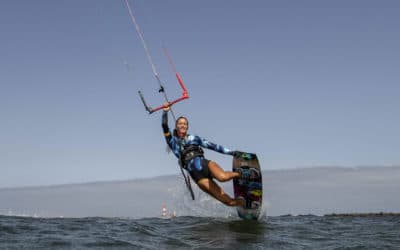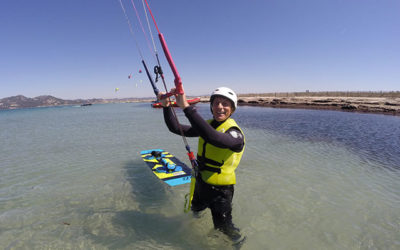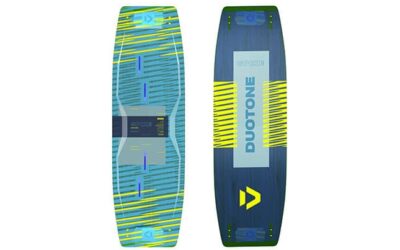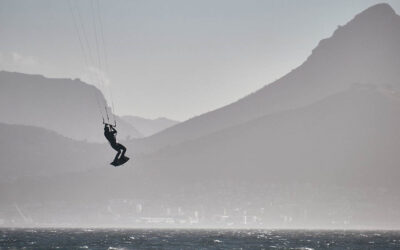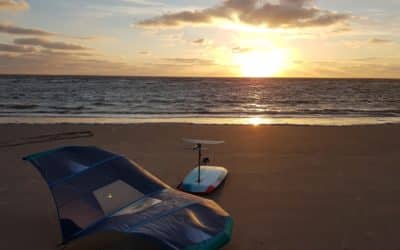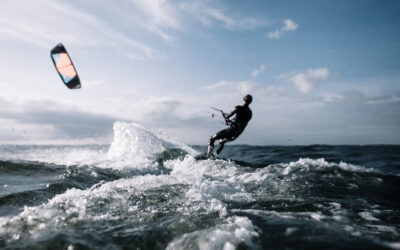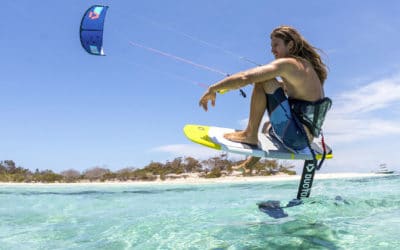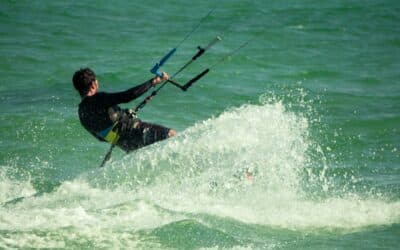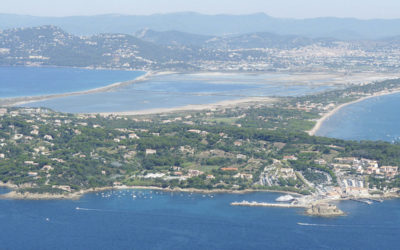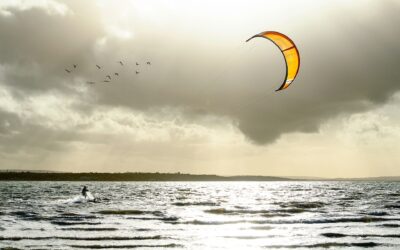Challenge the Waves: Learn Kitesurfing at KGG School
Imagine for a moment, standing on a sunny beach in Almanarre Bay. The warm sand beneath your feet, the wind gently whistling in your ears as your kite prepares to propel you over the turquoise waters of the Var. A captivating image, isn’t it? Welcome to the thrilling and exhilarating world of kitesurfing.
Why is Kitesurfing so Appealing to so many?
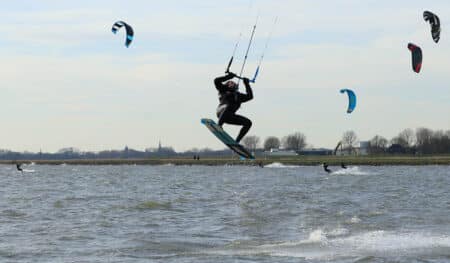
After all, where else can you gracefully float through the air like a majestic albatross or surf the waves like a playful dolphin? But before experiencing these magical moments, there’s an important step you can’t ignore: learning kitesurfing during a weekend course. And for that, there’s nothing like joining the KGG kitesurfing school in Hyères!
KGG School: a Springboard to New Heights
KGG is much more than just a kitesurfing school. Located in the idyllic setting of Almanarre Bay, it offers kitesurfing lessons adapted to all levels, from beginners looking to tame their first kite, to experienced riders wishing to refine their style. The school offers a variety of personalized kitesurfing courses based on your desires and progression level.
Meet Greg and Colin, the two passionate and experienced instructors. These aquatic kite aces will guide you with patience and expertise during your kitesurfing learning journey. They take as much care in explaining the basics of kitesurfing as they do in encouraging you to push your limits, always with a smile.
Almanarre’s Prime Location
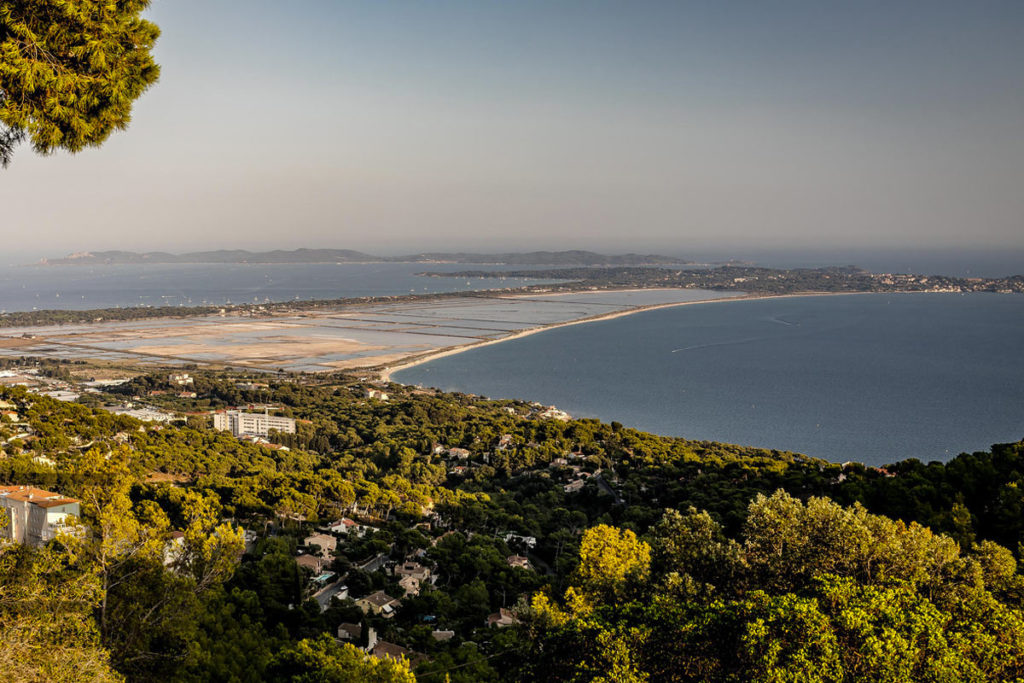
This magical spot, surrounded by breathtaking landscapes, attracts kiters from all over the world. With its shallow, crystal-clear water near the shore, you benefit from a safe environment to master the board and kite without fear.
Essential Equipment for Beginners
To ensure your safety and comfort when you’re starting out, it’s essential to have the right kitesurfing gear. Here’s a list of essentials:
- The Kite: Choose a size adapted to your weight and wind conditions. Kites range from 5m² for strong wind to 17m² for a gentle breeze.
- The Board: Medium size for beginners, offering stability and ease of going upwind.
- The Harness: Make sure it’s comfortable, as it’s what connects your body to the kite.
- The Wetsuit: Essential for protecting you from cold and irritation.
Greg and Colin will be sure to advise you on selecting the equipment best suited to your body type and level.
Steps to Learning Kitesurfing

Understanding Kitesurfing Theory
As often in life, before diving headfirst, it’s better to understand the theoretical basics. The first step of your training is therefore dedicated to understanding key concepts such as the wind window and wind direction.
You’ll start by handling a mini-kite on the beach to understand its behavior in mistral gusts. By performing these exercises, you’ll gradually develop essential muscle memory for effective maneuvering once on the water.
Taking Action: Mastering the Water
Then comes the long-awaited moment to touch the water. Calm and focused, you’ll put on your harness before launching into the azure sea of “Almanarre. This initial phase will consist of simulations called ‘body dragging’, where you’ll be pulled by the kite” without standing on the board.
This will be the perfect opportunity to play with the wind, refine your sensitivity to the kite’s movement, and gain confidence in your newly acquired skills. In this partial immersion, Greg and Colin will carefully supervise your progress.
Standing on the Board: First Ride
Finally, when you feel ready to move to the next level, it will be time to get on the board. You’ll then try the water start technique, which involves synchronizing your kite and board movements to get out of the water and go in the desired direction.
Like a strange and harmonious dance between man and nature, this moment will remain etched in your mind. Feeling the adrenaline rush, the crisp air caress your face, and the spray play in your hair are unique sensations to be savored intensely.
Physical Requirements for Kitesurfing
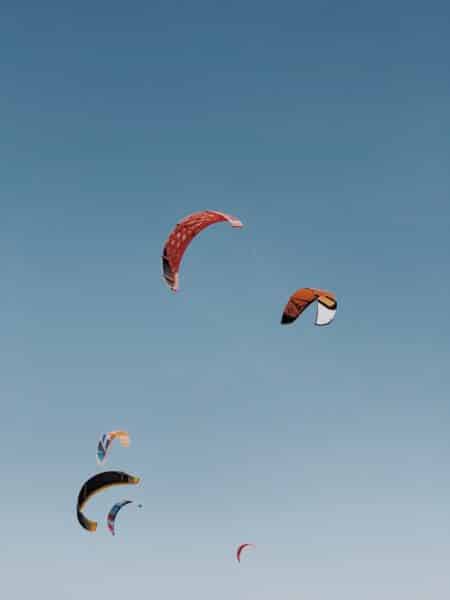
That said, certain body parts will be particularly engaged, such as the arms, core, and legs. Balanced athletic preparation will make things easier for you once you’re on the water.
Physical Preparation: Useful Tips
To optimize your experience and perfect your condition, focus on the following areas:
- Regular Warm-up: Stretch your muscles before each session to avoid tension and injuries.
- Pilates and Yoga: Improve your body posture and flexibility while strengthening your core.
- Hiking or Jogging: Gradually increase your lung capacity through regular cardio practice.
With these recommendations, our instructors guarantee you smooth progress during all your sessions in the bay.
FAQs on Learning Kitesurfing in Almanarre
How old do you have to be to start kitesurfing?
The recommended minimum age to start kitesurfing is generally 12 years old, mainly for reasons of size and the ability to properly understand safety instructions. However, some younger children can already practice under the careful supervision of qualified instructors, especially in adapted conditions.
Is it necessary to know how to swim to kitesurf?
Absolutely. Knowing how to swim is essential, not only for obvious safety reasons, but also because certain learning phases, such as body dragging, require direct interaction with the water. Sometimes, beginners find themselves momentarily separated from their board, so comfort in the water is paramount.
How long does it generally take to learn kitesurfing?
The time required varies depending on each novice’s profile, but generally, about 10 hours of kitesurfing lessons spread over a few days are enough to achieve basic autonomy. Subsequently, regular training and kitesurfing courses will allow you to perfect your skills and techniques.
What are the best weather conditions for kitesurfing?
Constant and moderate winds between 15 and 25 knots offer the best conditions for practice after mastering the basics of kitesurfing. However, avoid going out during thunderstorms or excessive winds to prevent any accidents. Our instructors systematically adapt sessions to the day’s conditions to ensure your safety and comfort.
Search
Catégories
Recent Posts
Suivez-nous !

